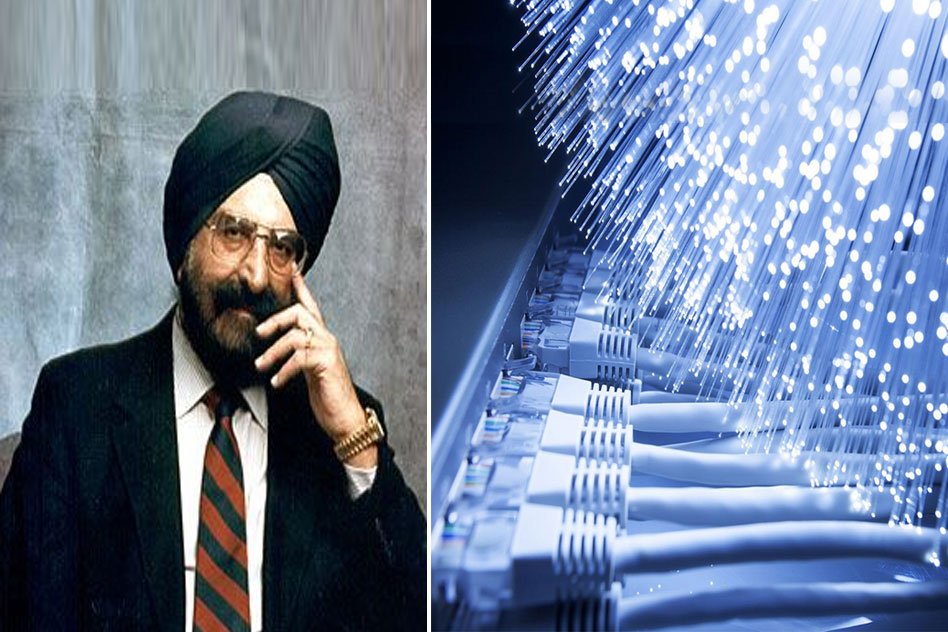
A Physicist Who Twisted Light: Meet The Father Of Fibre Optics
4 Nov 2016 1:02 PM GMT
Father Of Fibre Optics
Dr Narinder Singh Kapany, known as the father of fibre optics, is an Indian-born American physicist who has been a pioneer in the development and innovation of optical fibres. Taking on the roles of a physicist, a philanthropist, an entrepreneur, a businessman and a sculptor, he has been a huge contributor to the world in all sectors.
Early Life
Born to a Sikh family in Punjab in 1926, his interest in physics was ignited while listening to a physics lecture as a young boy in India where his teacher taught him that light travels in a straight line. This claim by his teacher prompted him to wonder why light could not travel in a straight line.
Kapany graduated from Agra University and went on to Imperial College of London for advanced study in optics where he earned his PhD in 1955. He then carried on his journey of innovation and research in the University of Rochester and later in Illinois Institute of Technology.
The beginning of fibre optics
Kapany’s research leading towards fibre optics began in the Imperial College while he worked with the venerated Harold Hopkins, an English physicist. He demonstrated his breakthrough research in 1954 at the Department of Physics when he showed that light could travel in bent glass fibres.
That demonstration paved the way for optical fibre communication that we utilize and take for granted today. He has published over hundred scientific papers in various international science journals leading to the establishment and colloquial usage of the term fibre optics.
Utility of fibre optics
Reducing the loss significantly and allowing information to be transmitted across large distances at much higher bandwidths, fibre optics has filled an important void in the data transmission and communication industry. It has extensive use in communications, sensors and power transmission along with its thankless contribution to medical devices. Fibre optics has led to the creation of medical devices such as gastroscope, endoscope and bronchoscope making detection and treatment of several diseases easier and affordable.
Decreasing losses has been one the greatest worries of the communications industry. Kapany, while proving that light can travel in a bent path, has given the world one the greatest inventions in modern optics.
Transforming technology, business, art and culture
He founded Optics Technology Inc. in 1960 where he was President, Chairman of Board and Director of Research for twelve years. A while after the company went public in 1967, he founded the Kaptron Inc. in 1973 and headed it until it was bought by AMP Incorporated in 1990.
He also served as an excellent academic aside from his active participation in his numerous business endeavours. He was a Regents Professor at the University of California, Berkeley and at the University of California, Santa Cruz. He served as a Visiting Scholar in the Physics Department and a Consulting Professor in the Department of Electrical Engineering at Stanford University.
Kapany is a fervent promoter of arts and culture. He was a major founder at the Sikh Foundation, which runs programs in publishing, academia and arts, and has been an active chairman for 30 years. He is an art enthusiast who is specialised in Sikh art.
Awards and recognition
Dr Narinder Singh Kapany’s ground-breaking work on fibre optics won him many awards and titles. He received the Excellence 2000 Award from the USA Pan-Asian American Chamber of Commerce. He is also a fellow of the British Royal Academy of Engineering, the Optical Society of America, and American Association for the Advancement of Science. He was also the recipient of the Pravasi Bhartiya Samman awarded by the Indian Government.
Dr Narinder Singh Kapany’s contribution to the world of science and technology is one that will leave a mark on the world for a long time. To quote Al Gore, the former Vice President of the United States, “High-capacity fibre optic networks will be the information superhighways of tomorrow”. We may owe a lot more to Dr Kapany’s work in the future as the rate of information exchanged in the world continues to grow at record-breaking numbers.
 All section
All section













